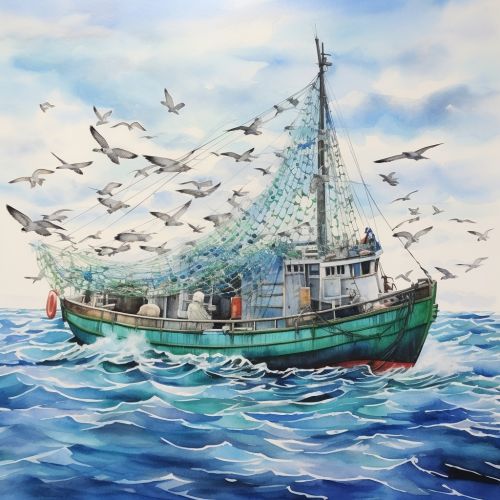Overfishing
Introduction
Overfishing is the act of catching fish from the sea at rates too high for the species to replenish their populations. This practice has led to a significant depletion of many fish stocks around the globe, threatening the balance of marine ecosystems and the livelihoods of communities dependent on fishing. Overfishing is a major environmental issue that has both ecological and socio-economic implications.


Causes of Overfishing
Overfishing is primarily caused by the increasing demand for seafood, advancements in fishing technology, and inadequate management and regulation.
Increasing Demand for Seafood
The global population's growing demand for seafood is a significant driver of overfishing. As the world's population continues to grow, so does the demand for protein-rich food sources like fish. This has led to an increase in fishing efforts and, consequently, overfishing.
Advancements in Fishing Technology
Advancements in fishing technology have also contributed to overfishing. Modern fishing gear, such as trawling nets, longlines, and fish finders, have increased the efficiency and capacity of fishing operations. These technologies allow fishermen to catch a larger number of fish in a shorter amount of time, often leading to overfishing.
Inadequate Management and Regulation
Inadequate management and regulation of fisheries is another major cause of overfishing. Many countries lack the necessary infrastructure and resources to effectively manage their fisheries. This often results in overfishing, as there are no effective measures in place to prevent or control it.
Impacts of Overfishing
Overfishing has a wide range of impacts, affecting not only the marine environment but also the socio-economic fabric of communities dependent on fishing.
Ecological Impacts
The ecological impacts of overfishing are profound. Overfishing can lead to the depletion of key species in the food chain, such as large predators, which can have a cascading effect on the entire ecosystem. This is known as a trophic cascade.
Overfishing also leads to a decrease in biodiversity, as it primarily targets top-level predators. This can result in an imbalance in the ecosystem, as these species play a crucial role in maintaining the health and stability of marine environments.
Socio-economic Impacts
Overfishing also has significant socio-economic impacts. Many coastal communities around the world depend on fishing for their livelihoods. Overfishing can lead to the collapse of local fisheries, resulting in economic hardship and increased poverty.
Furthermore, overfishing can lead to a decrease in food security, as fish is a primary source of protein for many people around the world. A decline in fish populations can therefore have serious implications for global food security.
Solutions to Overfishing
Addressing the issue of overfishing requires a multifaceted approach that includes improved regulation and management, technological advancements, and increased public awareness.
Improved Regulation and Management
Improved regulation and management of fisheries is a crucial step towards addressing overfishing. This can include implementing catch limits, creating marine protected areas, and improving monitoring and enforcement.
Technological Advancements
Technological advancements can also play a role in addressing overfishing. For example, the development of more selective fishing gear can help to reduce bycatch and the impact on non-target species.
Increased Public Awareness
Increasing public awareness about the issue of overfishing is also important. This can be achieved through education and outreach programs, as well as through the promotion of sustainable seafood choices.
Conclusion
Overfishing is a complex issue that requires a comprehensive and collaborative approach to address. While the problem is severe, there are solutions available that, if implemented effectively, can help to restore fish populations and ensure the sustainability of our oceans for future generations.
